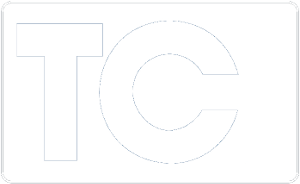How Successful SMBs Are Exploiting New Opportunities in the Future of Work
Coming out of the disruption of the past few years, how the world of work is changing is becoming more apparent. Challenges remain, but there are also opportunities for small- and mid-sized businesses (SMBs) to set a course for sustained success.
Successful SMBs are adapting to the shifting terrain. A recent SMG Group study reveals two main challenges to navigating ongoing changes and preparing for a prosperous future…
- There has been a significant power shift from employers to employees. It has, in many ways and many sectors, become a seller’s market for employees’ skills, expertise, and time. As a result, competition between businesses to attract and retain the best people is intense.
- There is a need for longer-term strategic thinking. Businesses are reviewing the decisions they made to survive during the pandemic. And many are realizing those decisions have led to disjointed technology solutions, overly complex processes, and inefficient systems.
Factors making successful SMBs optimistic about the future…
1. Resilience
Many digital transformation strategies adopted over the past few years were applied reactively and ad hoc. Businesses implemented disjointed technologies, putting multiple systems in place that don’t necessarily play nice with one another. Many of the solutions were needlessly complex and may buckle in a changing environment.
Unified and simplified technologies have played a role in making businesses more resilient. This is particularly true for Unified Communications as a Service (UCaaS) options. Industry-leading UCaaS systems bring features like advanced messaging, phone, and video together in one app, centralizing and simplifying communication. By bringing internal and external communications together, teammates can collaborate more efficiently and communicate more effectively with customers.
2. Putting People First
As important as technology is, it is simply an enabler. Running a successful business is about people: your employees and your customers.
The SMG report identifies people as a significant priority for businesses that want to future-proof their operations and continue to thrive. Hybrid work, once a rare offering for unusual circumstances, has been fully embraced by both employees and employers: 90% of SMBs that have adopted hybrid work find it valuable. And for job seekers, hybrid work is a significant priority: over 80% of applicants to a well-known job board said they’d feel more loyal to their employers if their work environments were flexible.
When many businesses switched to a digital workplace, much of the focus was on the technology needed to facilitate it, not on the people who would be using that technology. Working remotely exposed significant gaps in the digital employee experience, with some employees feeling they have been left on their own to manage multiple incongruous technologies without timely support.
Simplified UC tools that bring together multiple modes of communication make it easy for people to work together and work flexibly. Collaboration across geographies is faster and easier for employees, ensuring they feel supported no matter where they work. Using centralized, cloud-based tools eliminates the hassle of deploying and managing systems in multiple locations and helps keep your business agile.
3. Getting and Staying Agile
The agility that new technologies provide has proven to be a fundamental enabler of SMB growth. The SMG report shows that 80% of SMBs committed to technology adoption and investment anticipate revenue increases. The reason is simple. Many businesses have discovered that the customer experience is directly correlated to the employee experience. Happy, productive employees have happy, productive interactions with customers. And agility enabled by new technologies is fundamental to employee happiness because it allows them to work effectively from anywhere and still deliver excellent customer service.
Giving employees the ability to quickly adapt to changes like this while still working in a hybrid or remote environment, without struggling with outdated technology, is crucial to an employer’s ability to attract and retain top talent.
Plan Now for a More Prosperous 2023
Let’s talk about your Future of Work. Your local TCI experts are here to help you create an agile, successful work environment. Contact us: (703) 321-3030 or info@tcicomm.com.

